Samsung Galaxy Z Flip 5 Review: Our complete, in-depth verdict
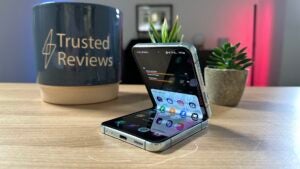

The Samsung Galaxy Z Flip 5 is a big improvement on the Z Flip 4 with a larger cover display, improved performance and a gapless fold, but with increased competition in 2023, it’s not quite as tempting an option as it once was.
Pros
- Premium look with no gap when folded
- Powerful Snapdragon 8 Gen 2 for Galaxy chipset
- Much more useful 3.4-inch cover display
Cons
- Same 12MP cameras as Z Flip 4
- Middling battery life, even for a foldable
- Cover display software is surprisingly limited
Key Features
- 3.4-inch cover displayThe new larger cover display allows you to reply to texts, check the weather and even get a preview of your camera viewfinder when taking selfies, offering a huge improvement over the Z Flip 4’s 1.9-inch panel.
- Top-end performanceThe custom chipset within the Z Flip 5 makes it the most powerful foldable around, easily able to handle high-end gaming and more.
- Premium look and feelWith no noticeable gap when folded, a thinner design, shiny aluminium frame and charming colour options, the Z Flip 5 is certainly a looker.
Introduction
As a fifth-generation foldable from Samsung, the Galaxy Z Flip 5 should deliver the perfect clamshell experience – but while it’s a significant improvement on the Flip 4, it doesn’t quite do enough to compete with the increased competition in 2023.
Don’t get me wrong; there’s a lot to like about the Samsung Galaxy Z Flip 5. It’s a much more refined foldable, finally ditching that annoying gap when closed, and it’s easily the most powerful foldable with the custom Snapdragon 8 Gen 2 for Galaxy chipset.
The problem is that it has not gone quite far enough to compete with other top-end foldables in 2023, like the Motorola Razr 40 Ultra and Oppo Find N2 Flip. Take the cover display for example; it’s gone from a diddy 1.9 inches to 3.4 inches, but it’s limited compared to the competition.
It also has the same dual 12MP camera setup, the same 3,700mAh battery and the same 25W charging as its predecessor, which would’ve been acceptable in earlier years, but not in 2023 – and at an increased £1049.
Design and build
- No more gap when folded
- Thinner and lighter
- Much more muted colour options
The Samsung Galaxy Z Flip 5 closely resembles the Z Flip 4, which in turn resembled the Z Flip 3, which… Okay, you get the point. The Samsung Galaxy Z Flip 5 isn’t a complete redesign of the flip phone’s blueprint, but there are a few notable differences on offer this time around.
Let’s start with the most obvious: no more annoying triangular gap when folded. That’s possible thanks to an improved teardrop hinge system that provides a near gap-less fold and helps reduce the crease on the inner display – but more about that in a bit. It makes an immediate difference to the overall look and feel of the device, truly elevating it to premium status.
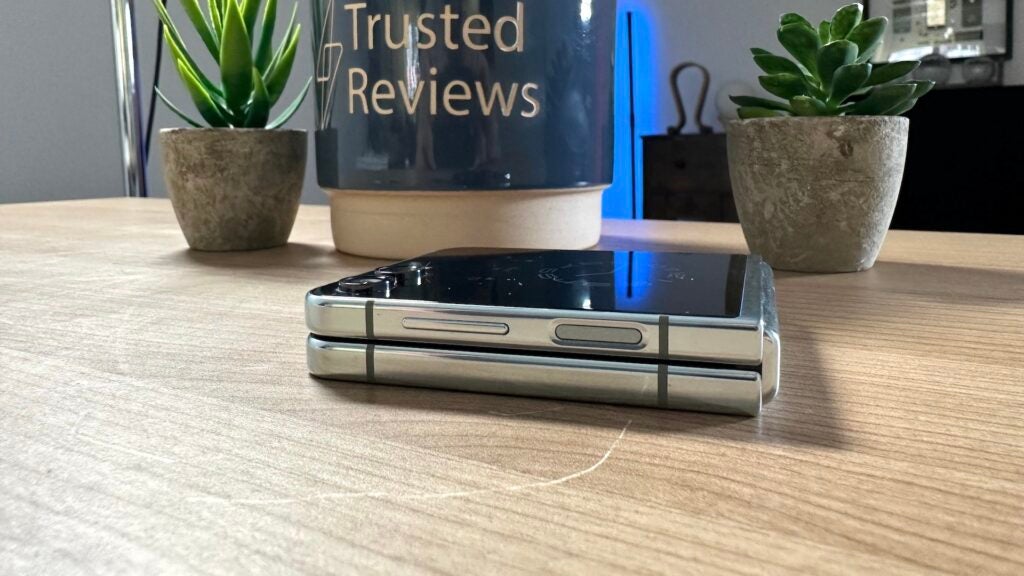
It has just the right amount of resistance too, allowing me to open the phone one-handed while still being rigid enough to stay half-folded without snapping into an open or closed position.
The phone is more compact, measuring 15.1mm when folded and 6.9mm unfolded, though that’s still a little chunkier than even the thickest Candybar flagship. Regardless, it’s a ridiculously compact size for a phone that packs a large flagship-quality 6.7-inch display.
There’s also a much larger cover panel at 3.4 inches, but I’ll get into that in more detail later.
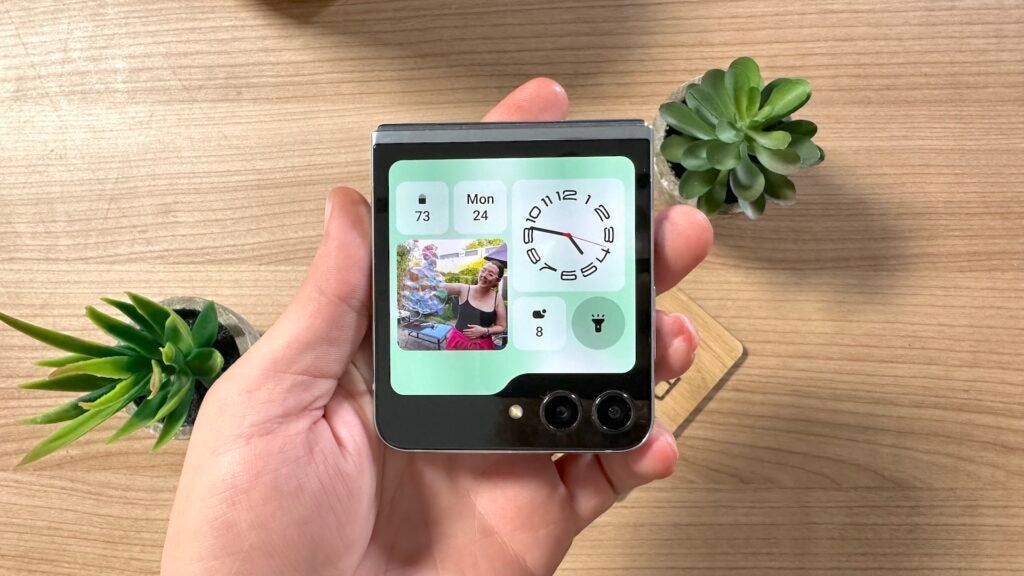
The satin finish of the rear panel has also been ditched, with the glossy rear of the Z Flip 3 making a comeback on the new model. It certainly feels nice and better complements the polished rims of the phone, but it does mean it’s susceptible to sliding off smooth surfaces.
The colour options, though still varied with options including Mint, Pink, and Cream, are much more muted this time. The mint model, which I was sent for review, is incredibly subtle, and the tint applied to the frame is even more so. However, I think it looks more premium and refined than the Razr 40 Ultra’s Viva Magenta finish.
Rumours were swirling around ahead of reveal that the Z Flip 5 could boast water and dust resistance. Since dust is the number 1 enemy of foldables and their intricate hinge systems, it’d undoubtedly be a game-changer. However, that’s sadly not the case, with the Z Flip 5 sporting the same (nonetheless impressive) IPX8 water resistance as its predecessor.
The Z Flip 5 is also a reasonably environmentally friendly product – as far as phones go. It’s partly made from plastics from recycled fishing nets, and the cardboard box that the Z Flip 5 comes in is 100% recyclable with 0 single-use plastic, allowing you to dispose of the packaging responsibly.
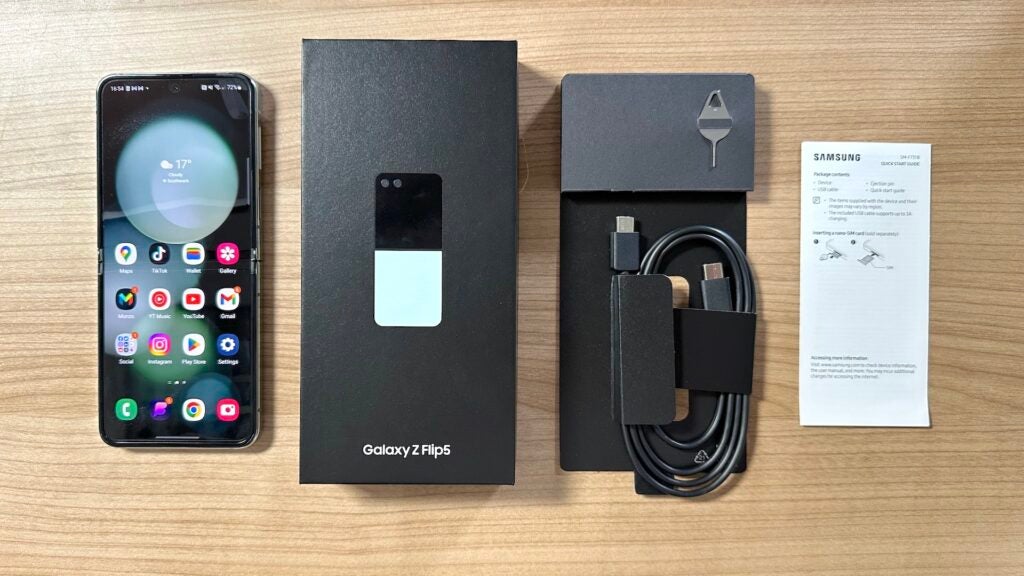
Displays
- Large 3.4-inch cover display
- Not as helpful as the Razr 40’s cover display
- Foldable 6.7-inch display feels more durable
Design tweaks aside, the main new feature of the Galaxy Z Flip 5 is its large external display. Measuring in at 3.4 inches and resembling an upside-down folder, it’s just shy of the 3.6-inch option from the Razr 40 Ultra. It’s a massive improvement from the 1.9 inches of the Z Flip 4, changing from a small display for notifications to something entirely more useful.
Of course, it’s all about functionality, and the Z Flip 5 comes prepared. Samsung has designed a bunch of cover screen widgets ranging from weather to recent contacts, calendar, stocks, now playing and more, all accessible by swiping left and right from the main panel.
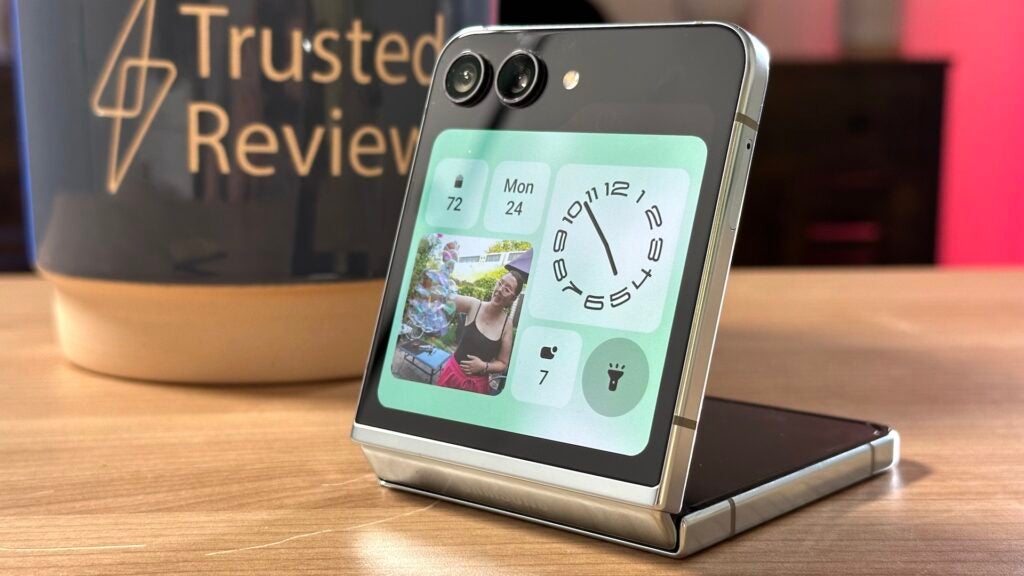
It’s not just widgets though; notification quick reply support allows you to reply to incoming messages via the full QWERTY keyboard quickly, you can answer calls on speaker and even use the display as a full-size camera viewfinder to allow your subjects to perfect their poses before you capture the moment.
The problem is it doesn’t go far enough in terms of software support. Take apps, for example; you can run a select few apps on the cover screen, including Messages, WhatsApp, Netflix and Google Maps, but even enabling that option requires you to delve deep into the phone’s Settings menu.
It’s severely limiting compared to the Razr 40 Ultra and its ability to run any app you like on the cover display, providing access to music apps, smart home controls and anything else you’d like without having to unfold the phone. That’s not the case here.
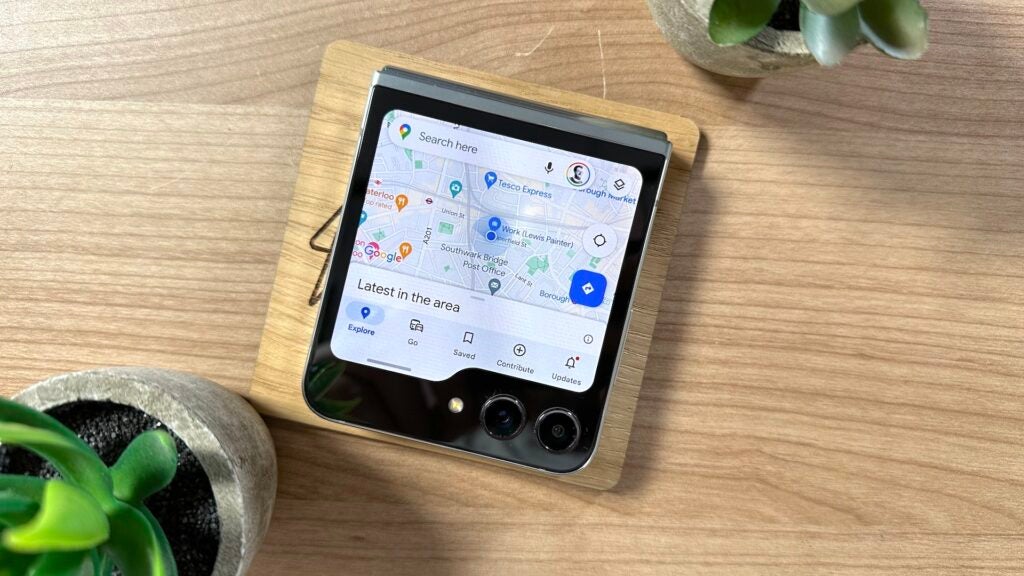
There are also minor issues with the cover display software, like the fact you can’t customise the quick setting toggles (making the fact it doesn’t include DND even more annoying), and you can’t access Bluetooth or Wi-Fi settings from the cover display either.
It’s an odd one, then; while the hardware is strikingly similar to the Motorola Razr 40, it’s hamstrung by frustrating software restrictions that stop it from providing the best experience possible.
Open the flip phone and you’ll find a familiar 6.7-inch Dynamic AMOLED 2X display with an FHD+ (2640 x 1080) resolution and a dynamic 120Hz refresh rate. It’s just as bright, vivid and smooth as its predecessor, particularly noticeable when watching HDR content from the likes of Netflix. It’s a gorgeous panel that’ll serve you well whether you’re scrolling through TikTok, playing games or binging a series on Netflix.
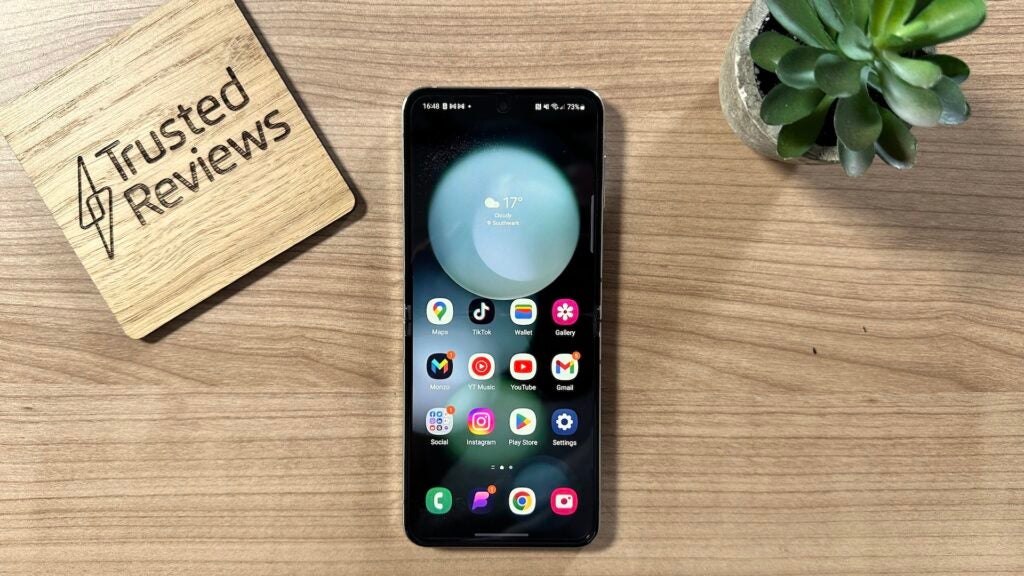
Of course, that was never the issue with the Z Flip; it was always the crease that let the display experience down a bit. While the improved hinge mechanism has reduced the inner crease of the Flip 5, it’s still noticeable when looking at the display off-angle, nor is it quite as shallow as options from Oppo and Motorola.
If there’s one area where the Z Flip 5 excels, it’s the feeling of the plastic foldable display. The foldable nature of flexible displays means manufacturers can’t use standard glass, instead relying on a plastic finish to protect the inner display.
This can result in a relatively soft, mushy feeling when tapping and swiping on the screen, but that’s not the case with the Z Flip 5. From the moment I started using it, I noticed how firm the display felt under my finger as I poked and swiped around. It’s still not as solid as real glass, but it’s a significant improvement over what I’ve seen before.
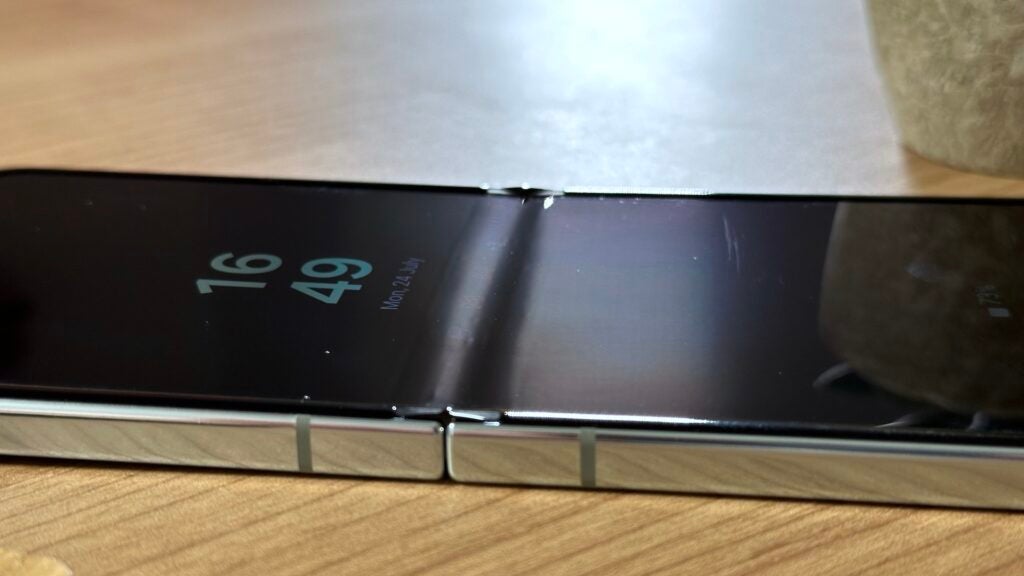
Cameras
- Dual 12MP cameras are capable in well-lit environments
- Low-light images look a little soft
- 4K@60fps with EIS
Unlike the cover display, the twin camera setup hasn’t had a substantial upgrade this year, sporting the same 12MP primary and 12MP ultrawide lenses as the Z Flip 4. Samsung claims that the primary lens is now less susceptible to lens flare, but aside from that, these are identical sensors and, as such, the image quality is very much in-line with that of the year-old foldable.
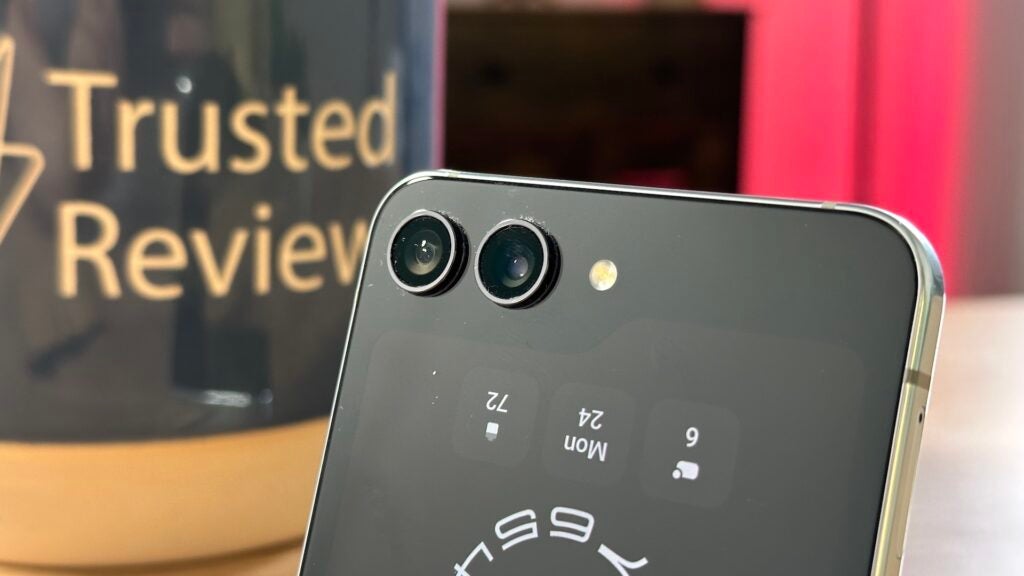
The primary 12MP snapper is capable of well-lit outdoor scenarios, with plenty of detail despite the lack of pixel-binning tech. The colours are vivid and vibrant, almost unnaturally so, though that’s a trademark of practically every Samsung phone – and they look great on the phone’s AMOLED display.




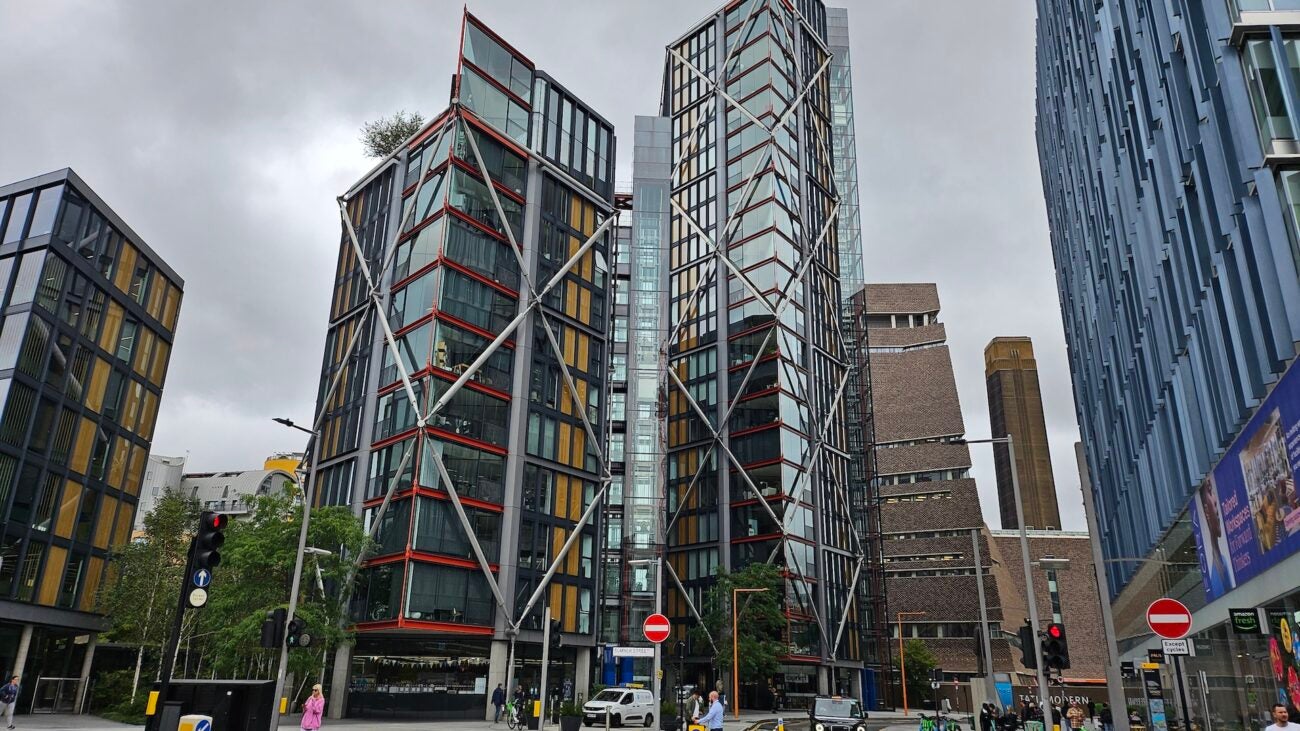

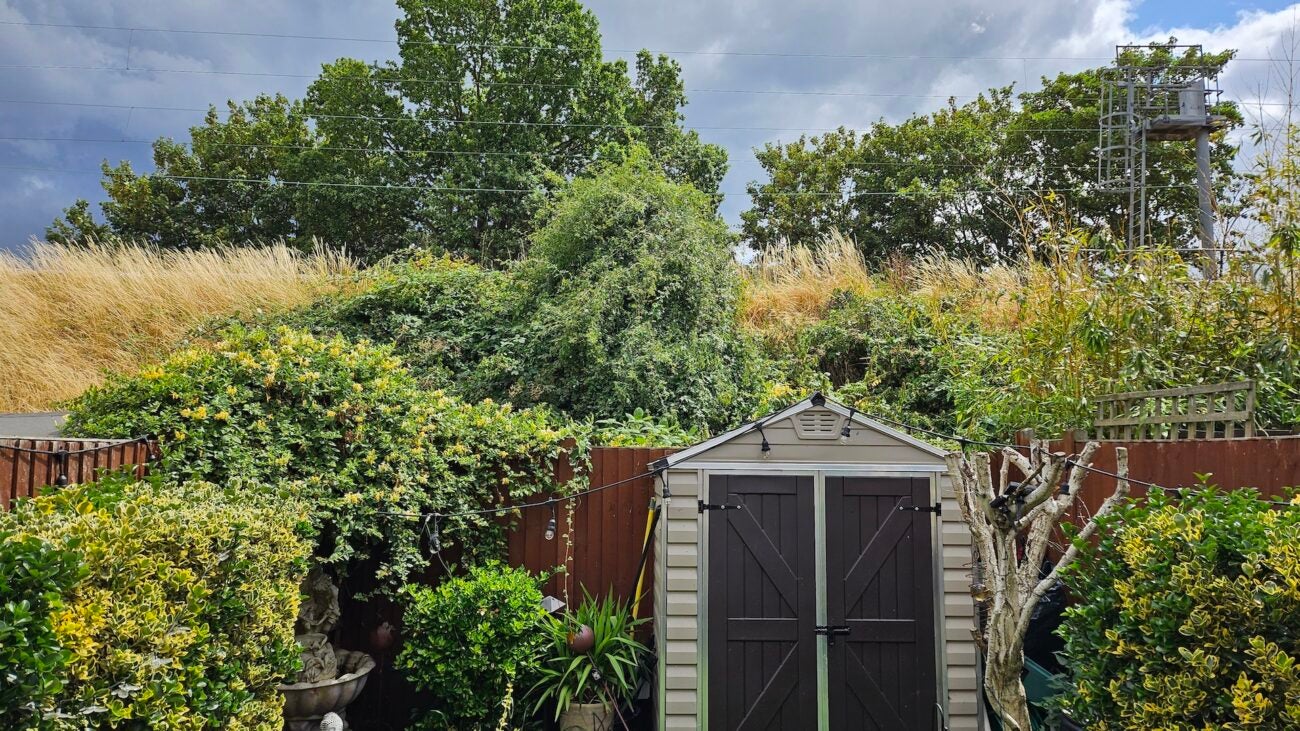

However, there is some work to be done with the phone’s HDR processing, with an over-processed and shadow-heavy look on images with a particularly wide dynamic range.
Shots taken from the ultrawide sensor are just as tantalisingly vivid as those from the primary sensor, with a nearly identical colour palette ensuring that colours don’t differ wildly between the two lenses. The 123-degree field of view is perfect for expansive shots and lacks distortion sometimes present on ultrawide lenses.
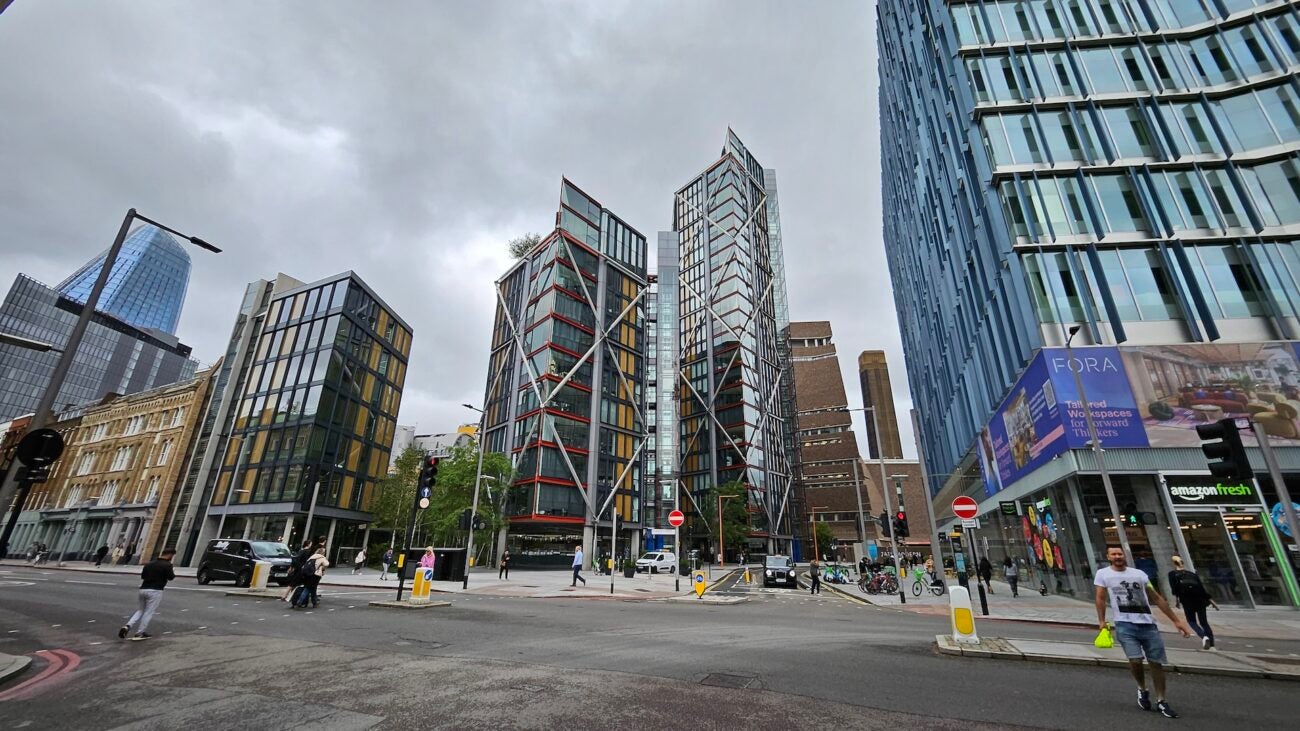
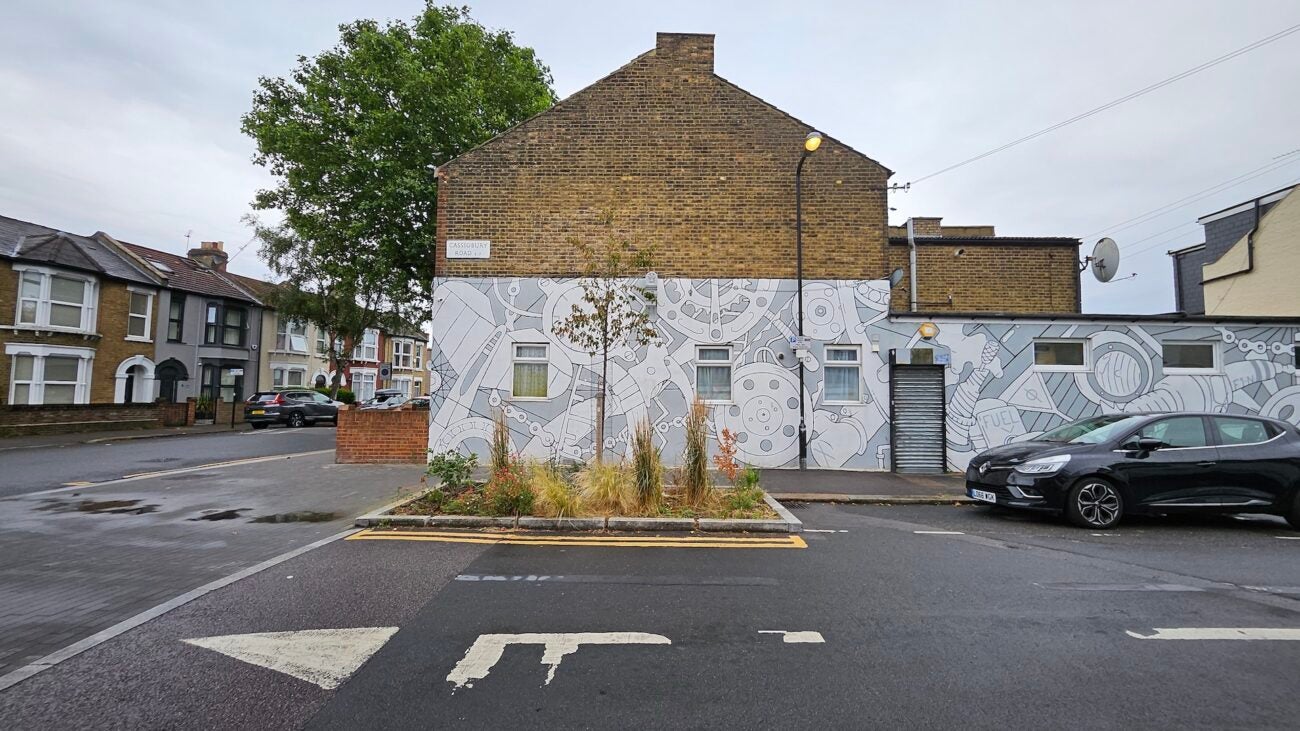



It’s a slightly different story once light levels drop, however. The primary sensor does an admirable job sucking in as much light as possible with its f/1.8 aperture. Still, without a high-resolution camera and binning available, images lack the level of detail found in daytime shots.
It’s also behind what’s produced by the Razr 40 Ultra and it’s 50MP f/1.5 primary lens in low light, with more detail and better lighting than Samsung’s option.
The low-light performance takes a further downturn when it comes to the ultrawide sensor and its f/2.2 aperture, with images looking rather dark and muddy, but that’s relatively common among ultrawide sensors.
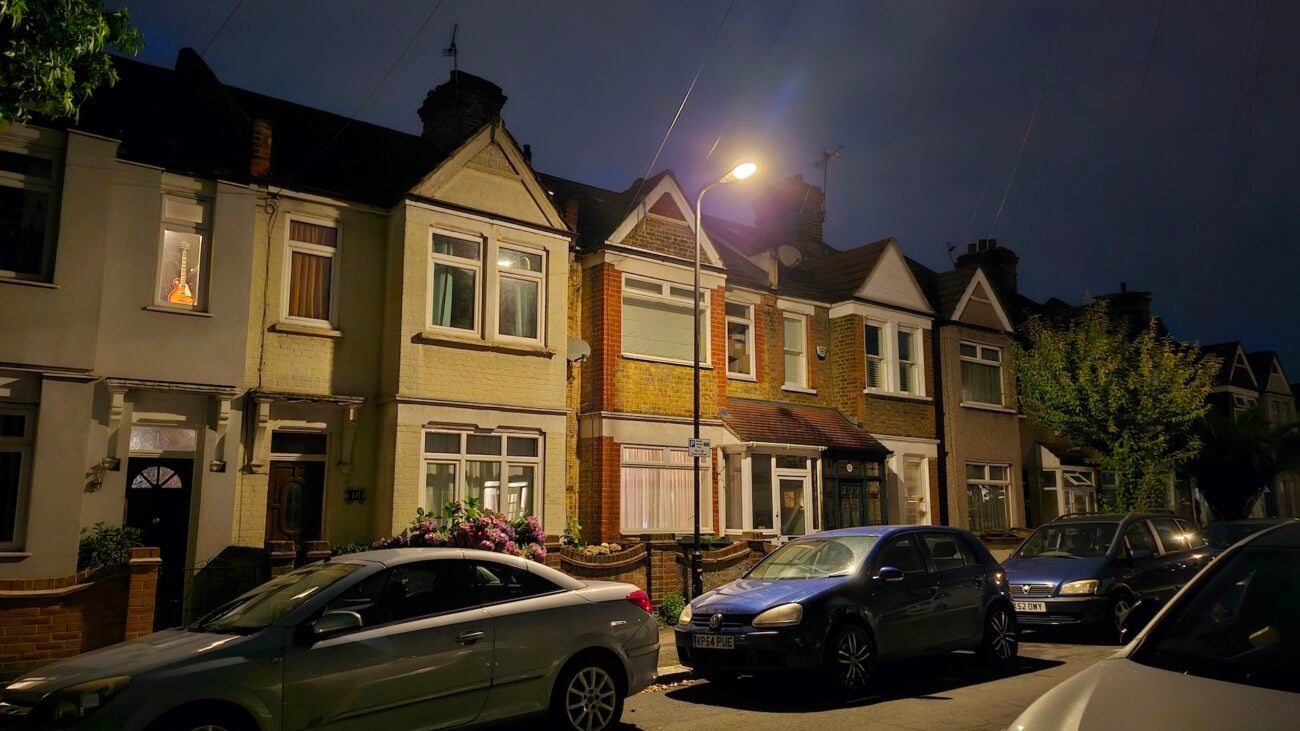


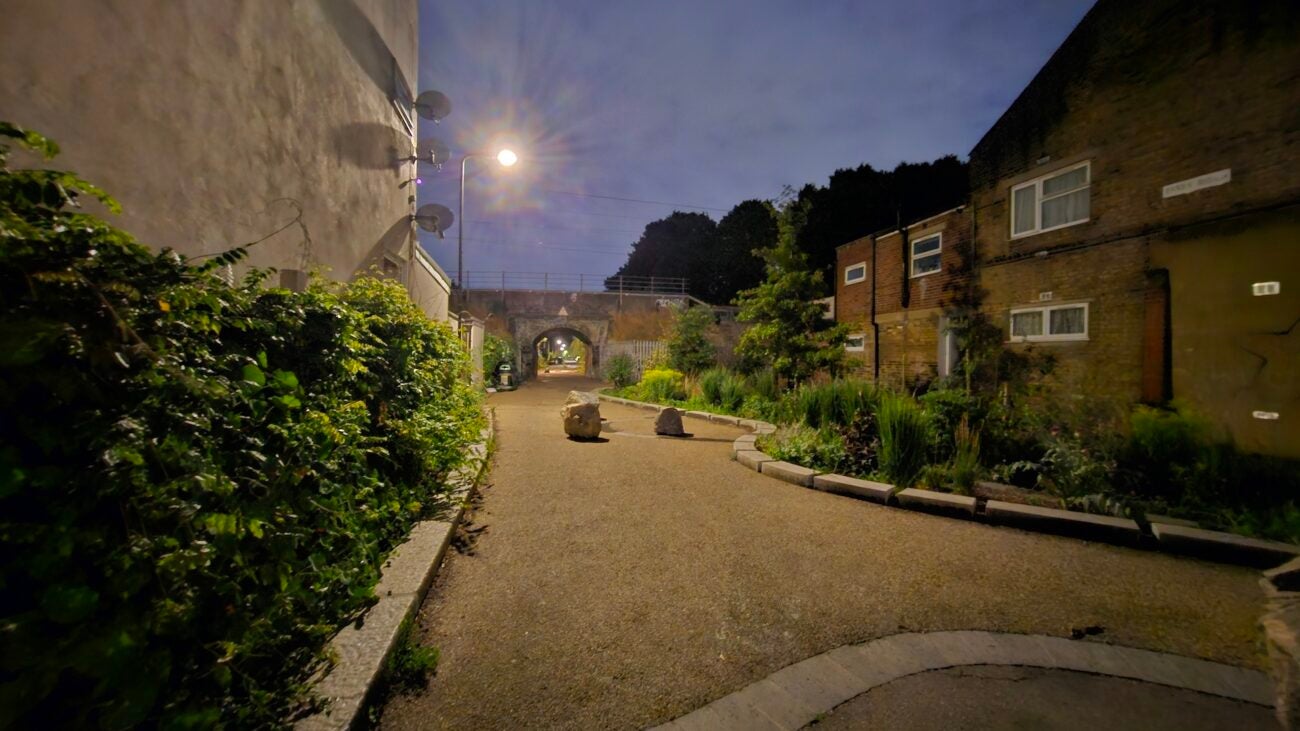

The selfie camera within the foldable display has had a downgrade from 12MP to 10MP this year. It’s okay for video calls, but it lacks the detail and vibrant colours you’ll find from the snappers on the lid of the device. However, I’d argue that it’s not that important with the primary lenses readily available for selfies.
Video caps out at 4K@60fps with image stabilisation that can easily smooth out shakiness from walking and holding a camera one-handed. It’s great for capturing those special moments, though I have noticed it’s more focused on horizontal stabilisation, with a slight jitter if I pan up or down as the phone fights against my movements and tries to keep the horizon steady.
Quality aside, it’s the foldable nature of the phone that makes it such a treat to shoot on; you can fold the phone half open and put it down on a flat surface for a makeshift tripod, now with a full preview of the camera on the cover screen to help perfect your pose. You’ve also got gesture support to remotely activate the shutter once you’re ready, and you can hold it like an old-school video camera for recording stable video too.
Performance
- Most powerful clamshell on the market
- 256- or 512GB of storage
- Decent audio performance with Dolby Atmos support
If there’s one thing I can confidently say about the Samsung Galaxy Z Flip 5, it’s that it’s the most powerful flip phone around at the moment. That’s because, like the flagship Galaxy S23 series, the Z Flip 5 sports Qualcomm’s custom Snapdragon 8 Gen 2 for Galaxy chipset exclusive to Samsung devices.
Compared to the regular 8 Gen 2 found on flagships like the OnePlus 11, the Samsung-exclusive variant boasts higher CPU clock speeds and an additional GPU core to squeeze the most out of the chipset, and it’s safe to say that’s evident in real-world use.
That’s paired with 8GB of faster LPDDR5X RAM and either 256- or 512GB of UFS 4.0 storage, with the 128GB entry-level model from last year seemingly going the way of the Dodo. There is no microSD card slot, however, so make sure you’re getting the right amount of storage for your needs.
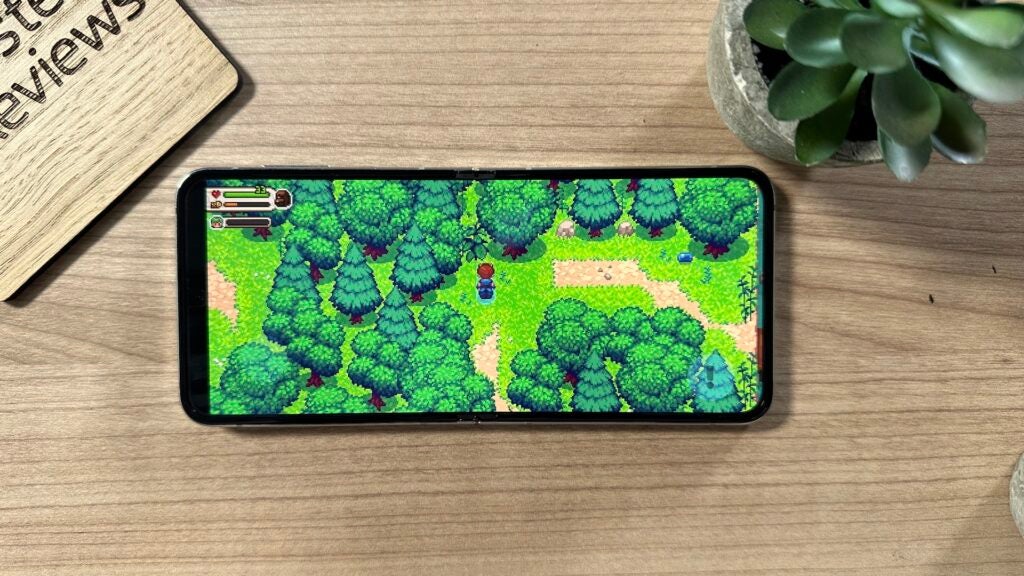
This phone is rapid in general use, instantly loading apps, swiping through screens and running power-intense AAA games like Genshin Impact without even a hint of lag. It does get warm over longer periods of play, which may make it less suited to dedicated mobile gamers, but for most people, it should more than suffice.
It’s also a true benchmark beater, with chart-topping results in the CPU and GPU departments compared to other foldables and flagship smartphones. This level of power is much of a muchness right now, but it should allow the phone to stay at the top of its game for the next few years.
Audio performance is also unexpectedly strong with a stereo setup that delivers decent spatial audio when watching Netflix on the speakers, and it’s also plenty loud despite its pocketable dimensions.
It’s not enough to ditch your Bluetooth speaker or high-end headphones, but it’s a serviceable option to listen to music while reading or cooking. You’ve also got Dolby Atmos support for headphones that further improve the immersion when using a pair of cans.
Software
- Android 13 with OneUI 5.1
- Plenty of pre-installed Samsung-branded apps
- Longest software promise for a foldable
The Samsung Galaxy Z Flip 5 runs Android 13 with Samsung’s OneUI 5.1 skin applied on top. It’s not exactly what I’d describe as stock Android – in fact, it’s pretty far from it – but the UI is generally easy to use if you’re familiar with the Android OS.
My big hang-up with OneUI is the sheer number of pre-installed Samsung-branded apps, with some replacing the Google equivalents that most of us are used to.
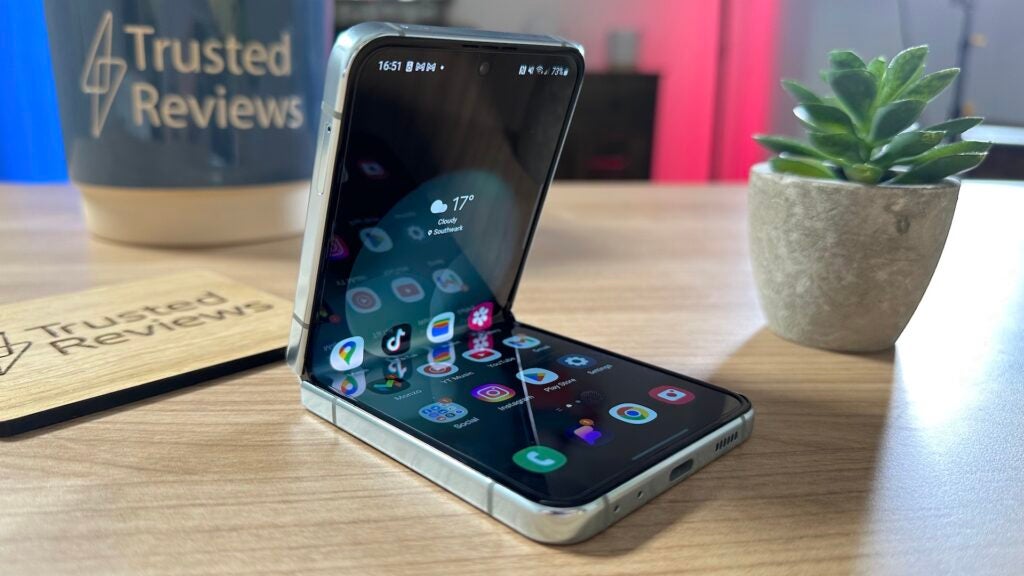
Google Assistant becomes Bixby, Google Wallet becomes Samsung Wallet, Google Chrome becomes Samsung Internet, and even Google Autofill has been swapped out with Samsung Pass. Most of these can be reverted to Google variants – except for Bixby, much to my chagrin – but it takes a bit of time and effort. That’s not to mention an entirely separate app store for Samsung-branded app updates.
A bunch of Microsoft apps come pre-installed, continuing Samsung’s long-time partnership with the PC brand, and features like Windows Link to PC are baked directly into the OS. That’s great if you’re already in the Microsoft ecosystem, but for most Google users, it’s just more bloatware that needs to be deleted.
It’s not all bad though; there are also features exclusive to Samsung devices like Modes and Routines. This acts similarly to Focus Modes on iOS, allowing you to set specific modes for sleep, work, relaxing and more with different wallpapers, home screen layouts, notification settings and more depending on what you’re doing.
There are also a bunch of Samsung-designed widgets, including Smart Suggestions that use AI to provide shortcuts to apps you’re likely to use at that moment in time. Of course, the phone also plays exceptionally well with any Samsung-branded accessories and products.
The good thing about the Z Flip 5’s software is that it’ll keep improving, with Samsung committing to five years of bi-monthly security patches and four OS upgrades, the longest software support for any foldable right now.
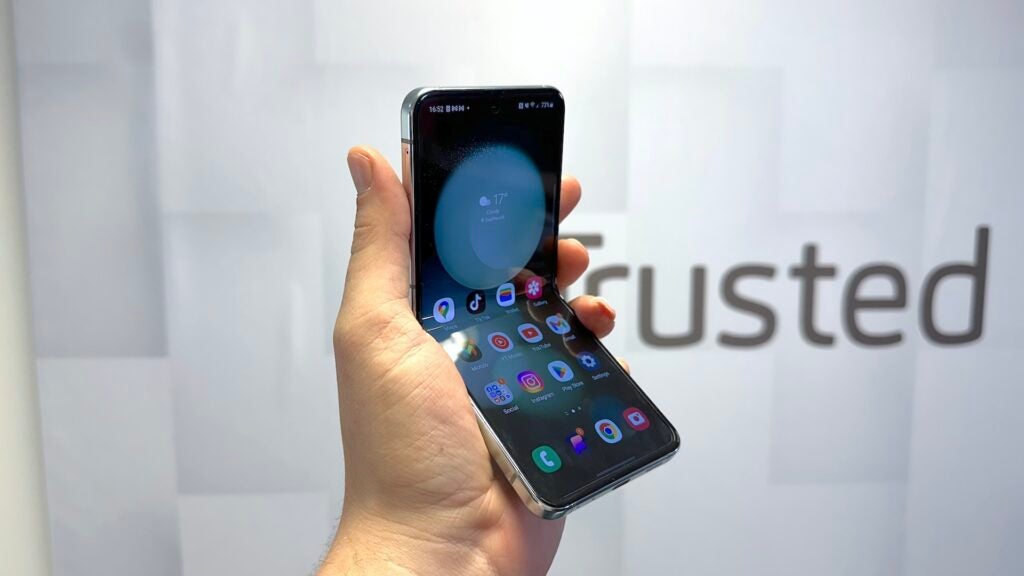
Battery life
- Same 3,700mAh battery as its predecessor
- Just about an all-day device
- Full charge in an hour
Battery life has never been a strong suit for Samsung’s flip phones, with earlier generations struggling to last an entire day without needing a cheeky top-up. I was hoping that would finally change with the Z Flip 5 – the Oppo Find N2 Flip and Razr 40 Ultra can get to the end of the day with a bit of charge to spare – but unfortunately, I’ve not found that to be the case.
That’s mainly because the Z Flip 5 sports the same relatively small 3700mAh battery as its predecessor did, though with a much larger external display to power this time around.
With that said, I’ve made it to the end of the day with a little charge left in the tank, but not that much – and I’m not exactly what I’d classify as a power user.
One day, I took the phone off charge at 11am, used it to snap a few photos, scroll on TikTok for a while, check Instagram and send a few WhatsApps, and by 11pm, I was down to 15%. Overall, that equated to just 3 hours of screen time.
It wasn’t just a one-off either; on another day, I took the phone off charge at 12pm, used it through the day (including an hour of Netflix and 30 minutes of gaming, again equating to just over 3 hours of screen time) and by 11pm, it was down to just 5%.
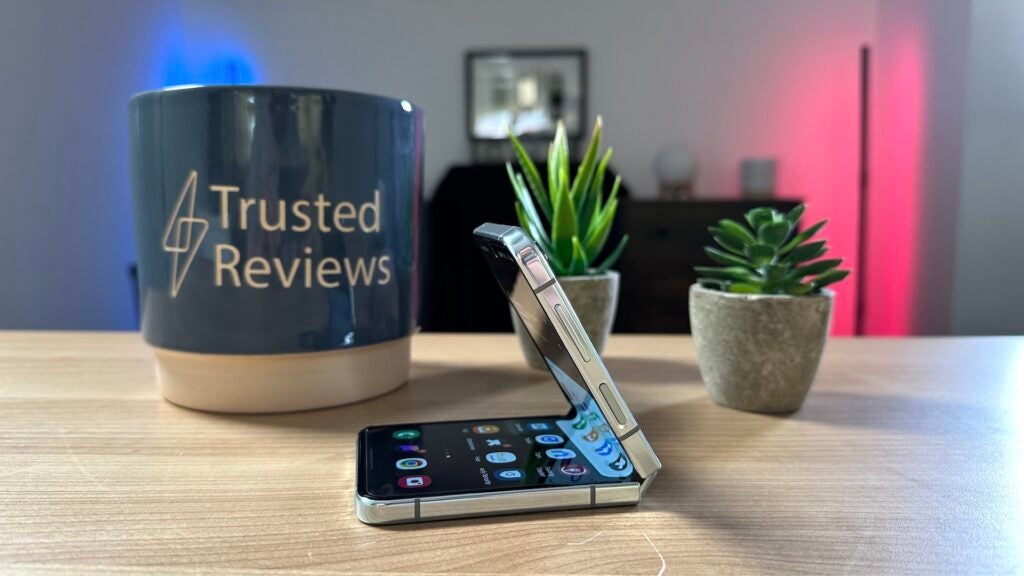
That’s backed up by benchmarks too, with an hour of Netflix playback draining 10% battery, while 30 minutes of light gaming saw an 8% drain. That said, the Z Flip 5 won’t be the foldable to rid you of your battery anxiety. If anything, it might make it worse.
25W charging allows for a ‘fast’ charging experience, though it’s not exactly quick by flagship smartphone standards, and you’ll have to source it yourself with no brick in the box.
Granted, it achieved 50% in 26 minutes and a full charge in 62 minutes in testing using a spare 30W charger I had handy, but that’s still a little slow compared to regular flagship smartphones.
Latest deals
Should you buy it?
You want a foldable that doesn’t compromise on power: The custom Snapdragon 8 Gen 2 for Galaxy is incredibly powerful, delivering some of the best benchmarks we’ve seen from any foldable to date.
You want a foldable with great cameras: The dual 12MP lenses are fine in well-lit conditions, but they don’t quite hold up in low-light scenarios – even compared to the best foldables in 2023.
Final Thoughts
The Samsung Galaxy Z Flip 5 is a significant improvement on the Z Flip 4, but unlike in previous years, Samsung now has to compete with foldable options from other manufacturers – and that’s where things aren’t quite as rosy.
For example, the new 3.4-inch external panel, while much more useful than that of the Z Flip 4, is somewhat restricted. While you can run specific apps like Messages and YouTube, the Razr 40 Ultra allows you to access any app you like for more in-depth tasks, making Samsung’s option look less impressive.
It also has the same dual 12MP camera setup as its predecessor which, while performing just fine in well-lit conditions, could be better when light levels begin to drop. Again, this wouldn’t have been such an issue had the Razr 40 Ultra and Oppo Find N2 Flip not included much higher-res cameras with better performance across the board.
The Samsung Galaxy Z Flip 5 has some redeeming qualities – the gapless close finally completes the premium look, it boasts true flagship power from the Snapdragon 8 Gen 2 for Galaxy chipset and one of the firmest foldable displays I’ve used – but it feels like a minimal effort in a year where Samsung had to put its best foot forward.
How we test
We test every mobile phone we review thoroughly. We use industry-standard tests to compare features properly and we use the phone as our main device over the review period. We’ll always tell you what we find and we never, ever, accept money to review a product.
Find out more about how we test in our ethics policy.
Used as a main phone for a week
Thorough camera testing in well-lit and low-light conditions
Tested and benchmarked using respected industry tests
FAQs
Yes, with IPX8 water resistance, the Z Flip 5 should survive a dip in up to 1 meter of water for up to 30 minutes, though water damage isn’t covered by Samsung’s warranty.
It’s somewhat fast at a maximum of 25W, but you won’t get a charging brick in the box.
Samsung claims that the Z Flip 5 will get five years of bi-monthly security patches and 4 OS upgrades, making it the most competitive in the foldable market.
Trusted Reviews test data
Full specs
The post Samsung Galaxy Z Flip 5 Review: Our complete, in-depth verdict appeared first on Trusted Reviews.
Source Trusted Reviews ,Home Appliances Reviews


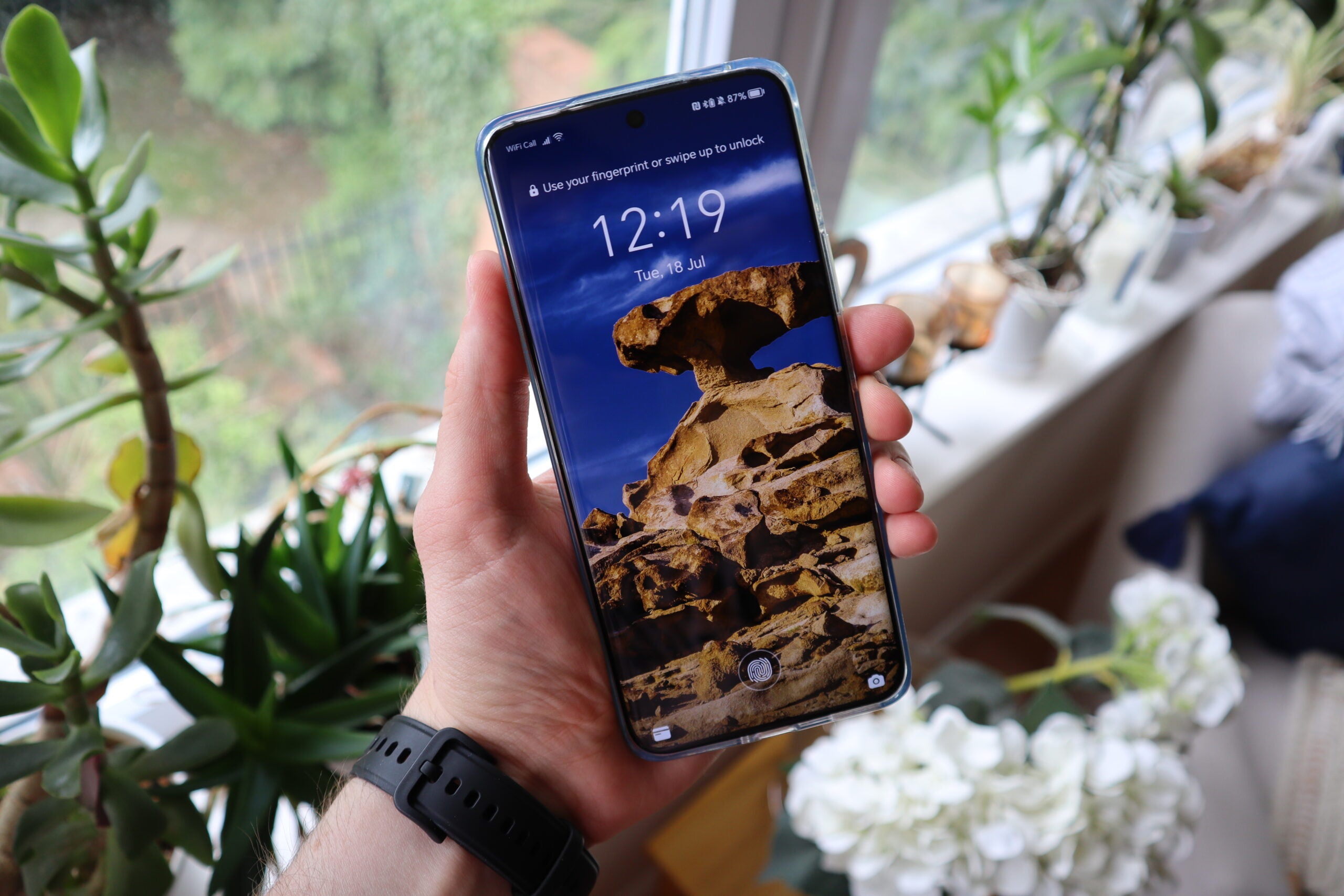

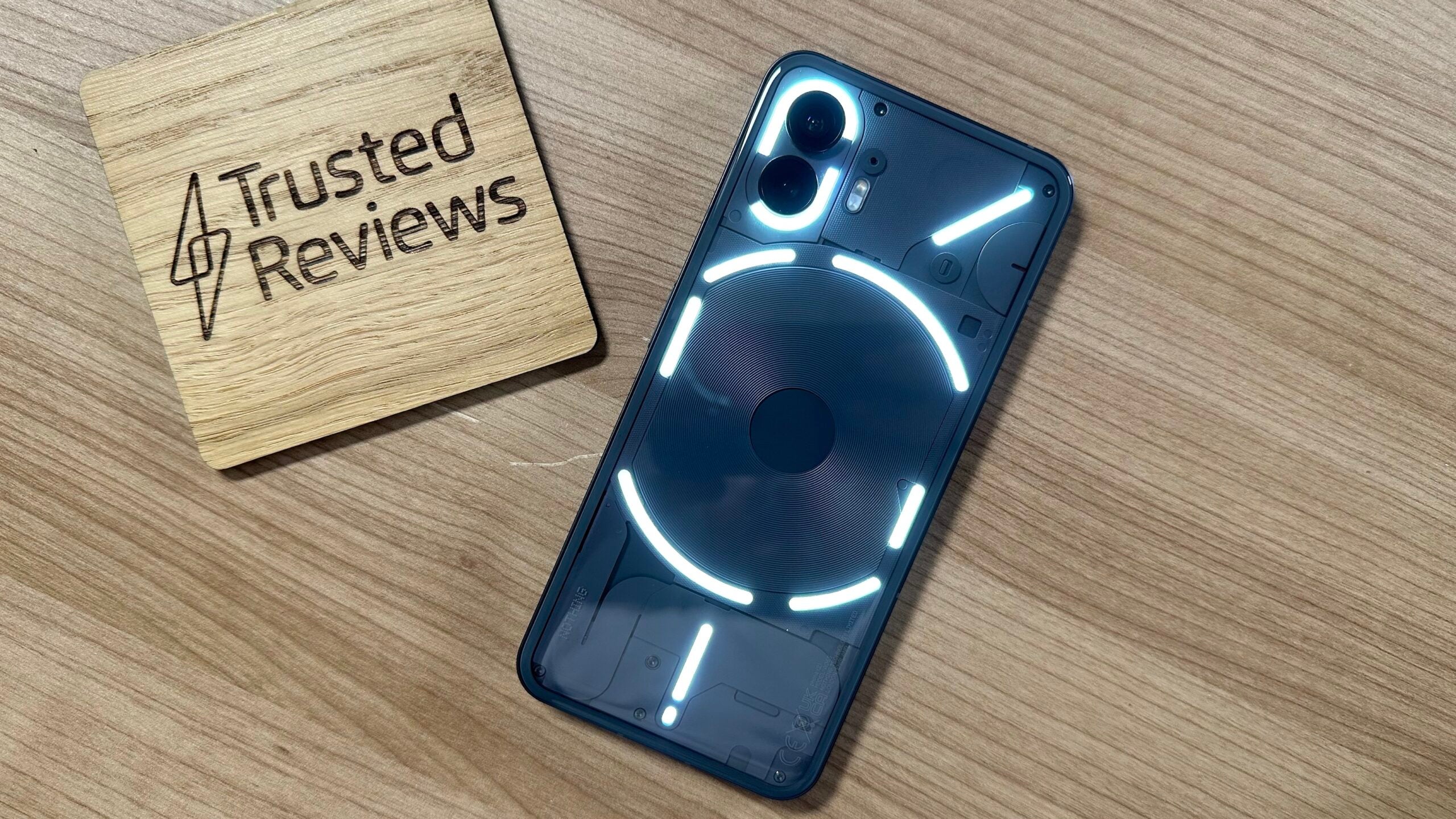
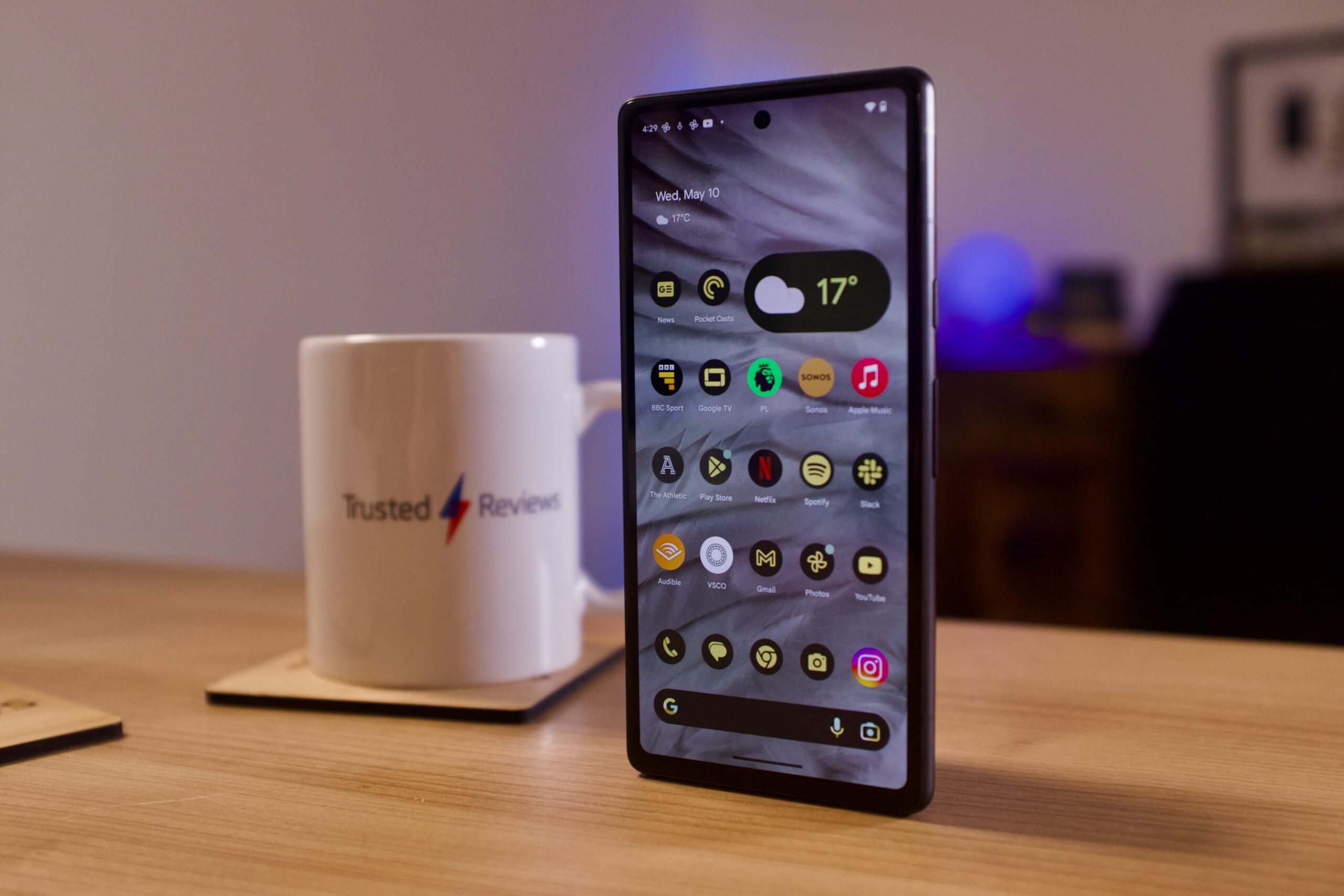
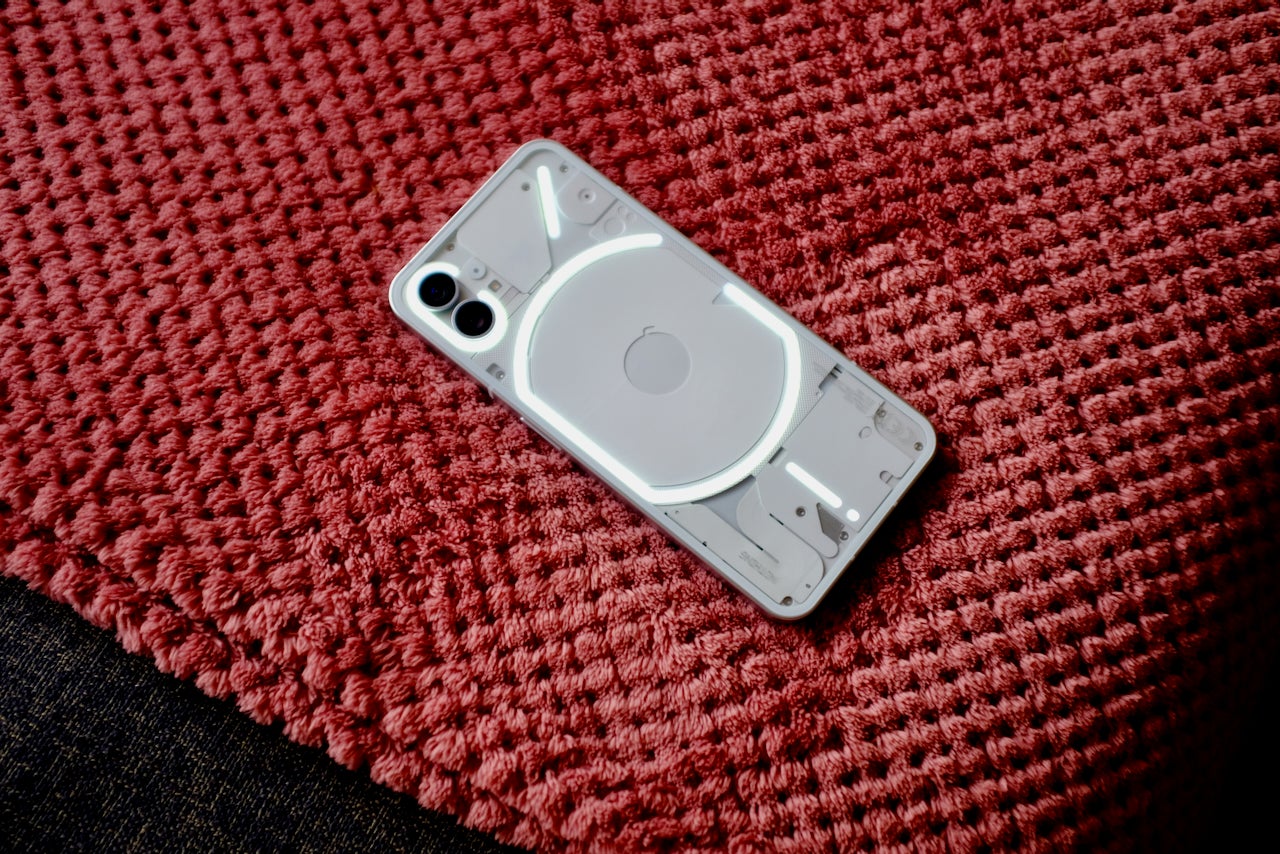
No comments